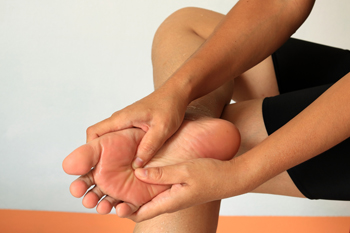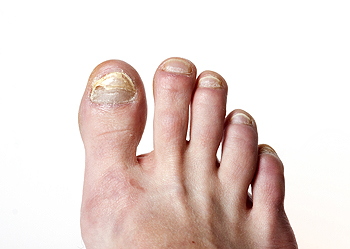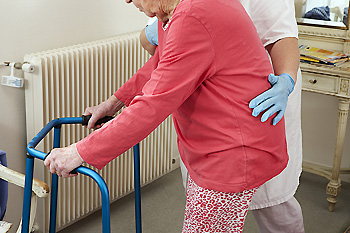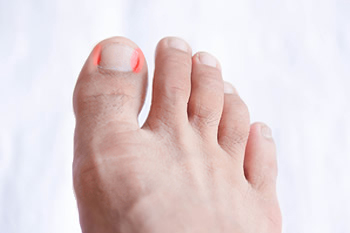 Those with peripheral artery disease, or PAD for short, may experience chronic ischemia, better known as a lack of blood supply. When this occurs, you may experience a dull, cramping pain in the affected area, commonly the feet, when exercising. The pain often stops when resting. This kind of symptom is referred to as claudication. For a proper diagnosis, a podiatrist may suggest taking an ABI, or ankle brachial index. This exam consists of using ultrasound images that will measure the blood pressure in your feet. This type of test is common for diagnosing PAD, and is painless. PAD is likely to develop among adults over the age of 50, and is especially common for those with diabetes. For more information about peripheral artery disease, and to discuss a plan for treatment, we recommend you consult with a podiatrist for professional care.
Those with peripheral artery disease, or PAD for short, may experience chronic ischemia, better known as a lack of blood supply. When this occurs, you may experience a dull, cramping pain in the affected area, commonly the feet, when exercising. The pain often stops when resting. This kind of symptom is referred to as claudication. For a proper diagnosis, a podiatrist may suggest taking an ABI, or ankle brachial index. This exam consists of using ultrasound images that will measure the blood pressure in your feet. This type of test is common for diagnosing PAD, and is painless. PAD is likely to develop among adults over the age of 50, and is especially common for those with diabetes. For more information about peripheral artery disease, and to discuss a plan for treatment, we recommend you consult with a podiatrist for professional care.
Peripheral artery disease can pose a serious risk to your health. It can increase the risk of stroke and heart attack. If you have symptoms of peripheral artery disease, consult with the podiatrists from Boston Common Podiatry. Our doctors will assess your condition and provide you with quality foot and ankle treatment.
Peripheral artery disease (PAD) is when arteries are constricted due to plaque (fatty deposits) build-up. This results in less blood flow to the legs and other extremities. The main cause of PAD is atherosclerosis, in which plaque builds up in the arteries.
Symptoms
Symptoms of PAD include:
- Claudication (leg pain from walking)
- Numbness in legs
- Decrease in growth of leg hair and toenails
- Paleness of the skin
- Erectile dysfunction
- Sores and wounds on legs and feet that won’t heal
- Coldness in one leg
It is important to note that a majority of individuals never show any symptoms of PAD.
Diagnosis
While PAD occurs in the legs and arteries, Podiatrists can diagnose PAD. Podiatrists utilize a test called an ankle-brachial index (ABI). An ABI test compares blood pressure in your arm to you ankle to see if any abnormality occurs. Ultrasound and imaging devices may also be used.
Treatment
Fortunately, lifestyle changes such as maintaining a healthy diet, exercising, managing cholesterol and blood sugar levels, and quitting smoking, can all treat PAD. Medications that prevent clots from occurring can be prescribed. Finally, in some cases, surgery may be recommended.
If you have any questions, please feel free to contact our office located in Boston, MA . We offer the newest diagnostic and treatment technologies for all your foot care needs.










